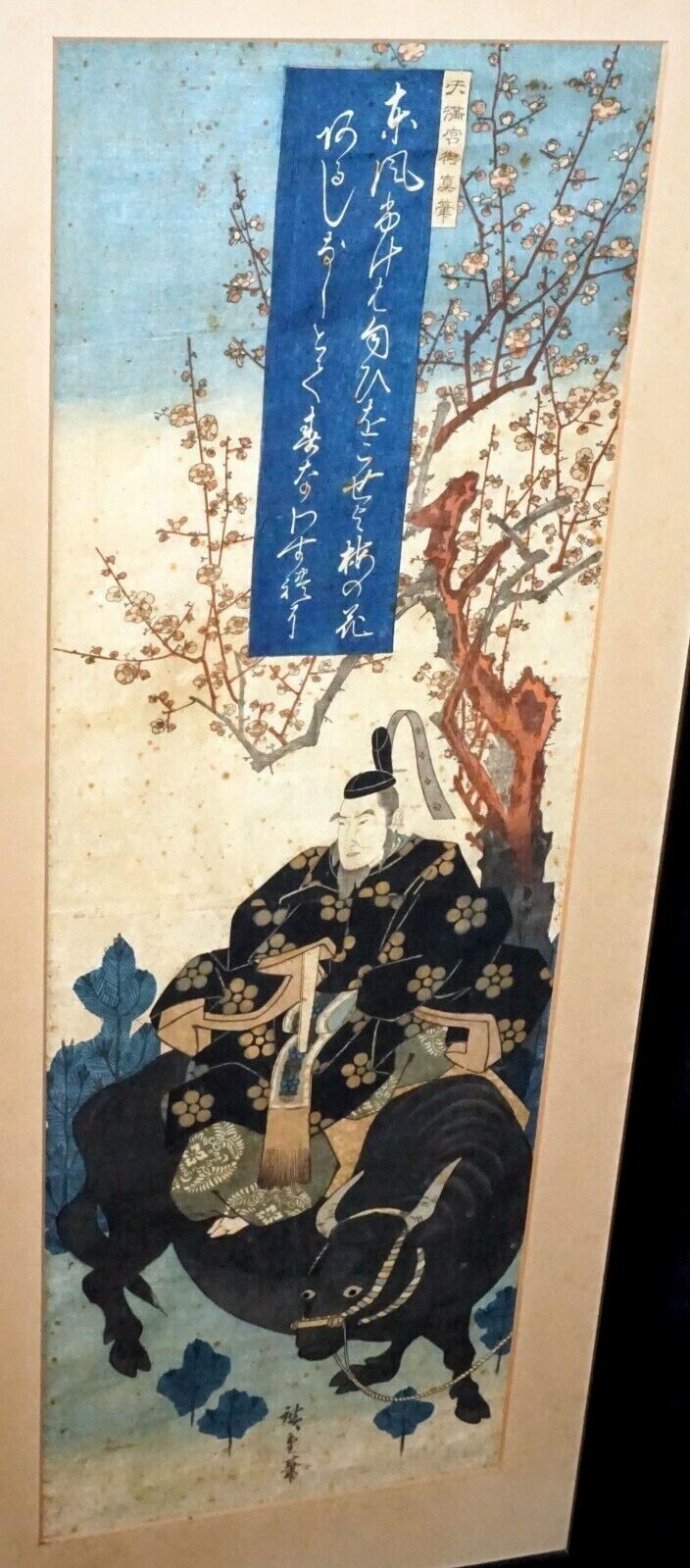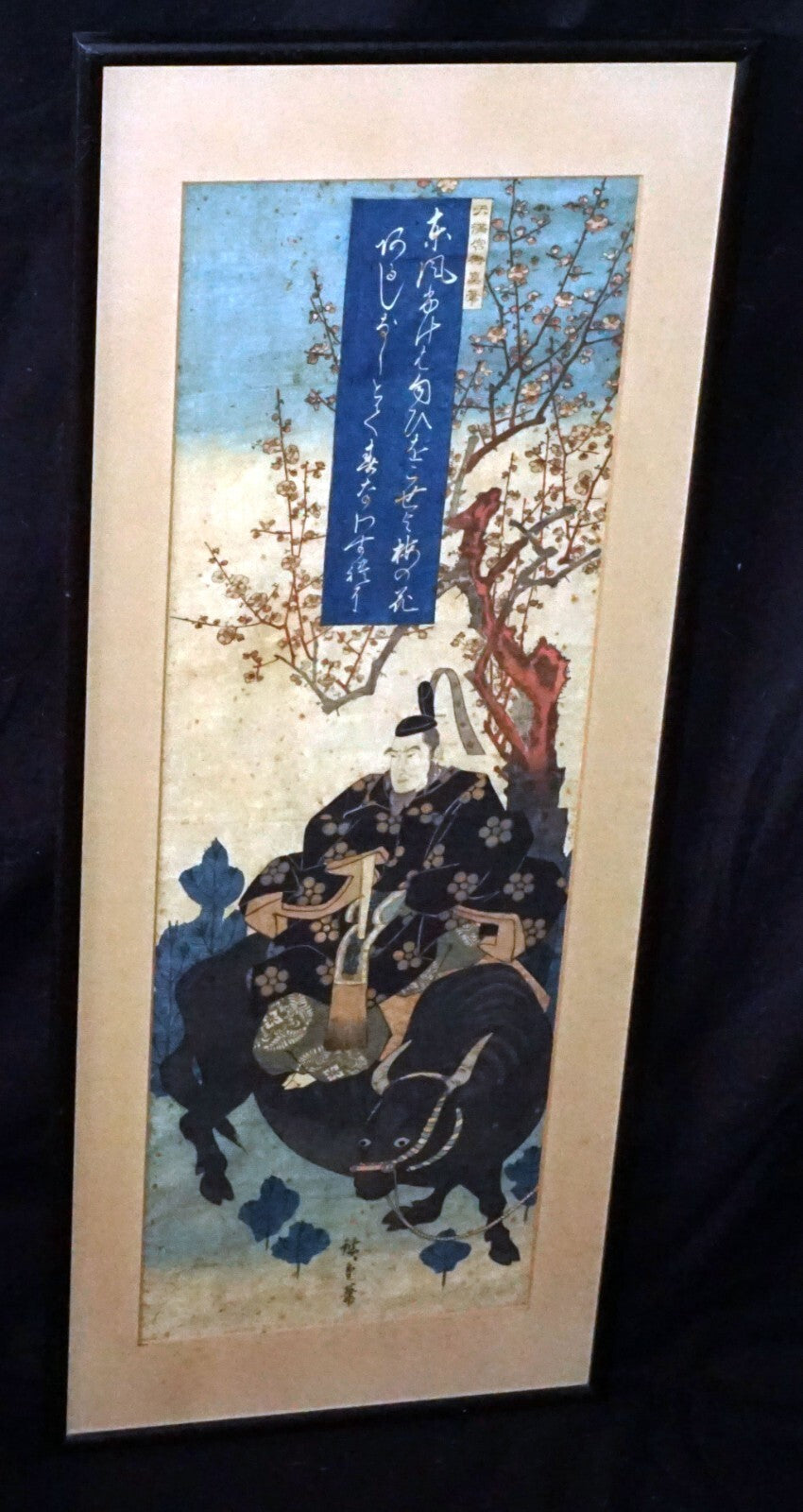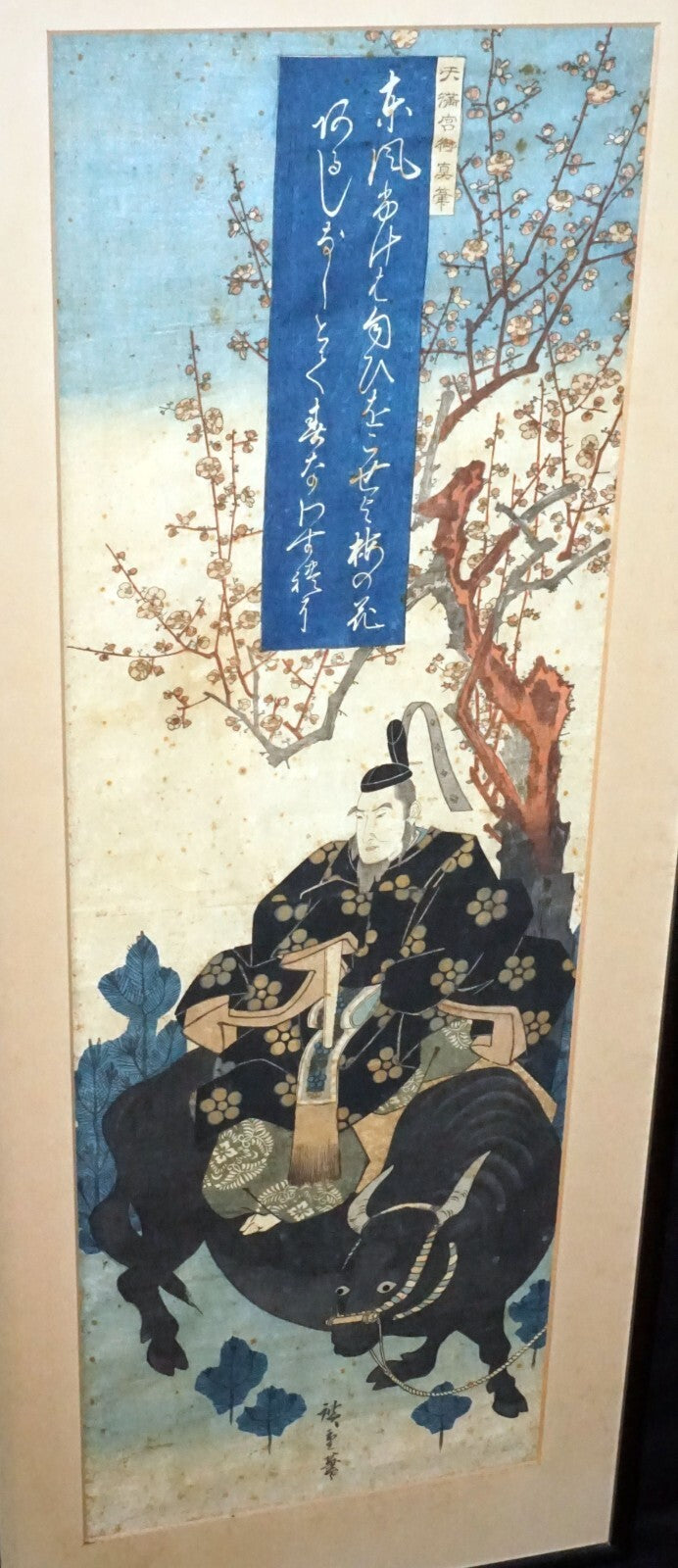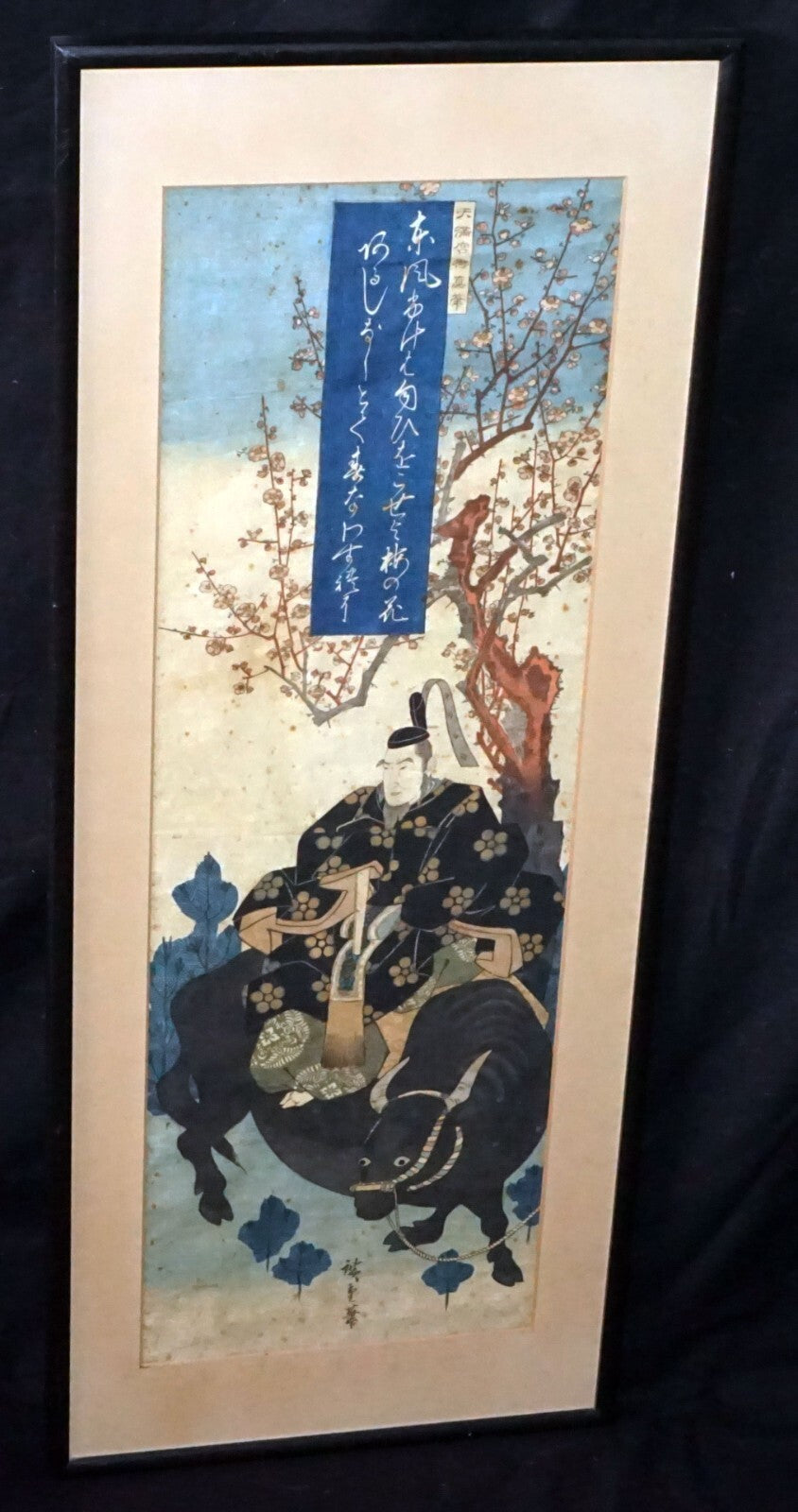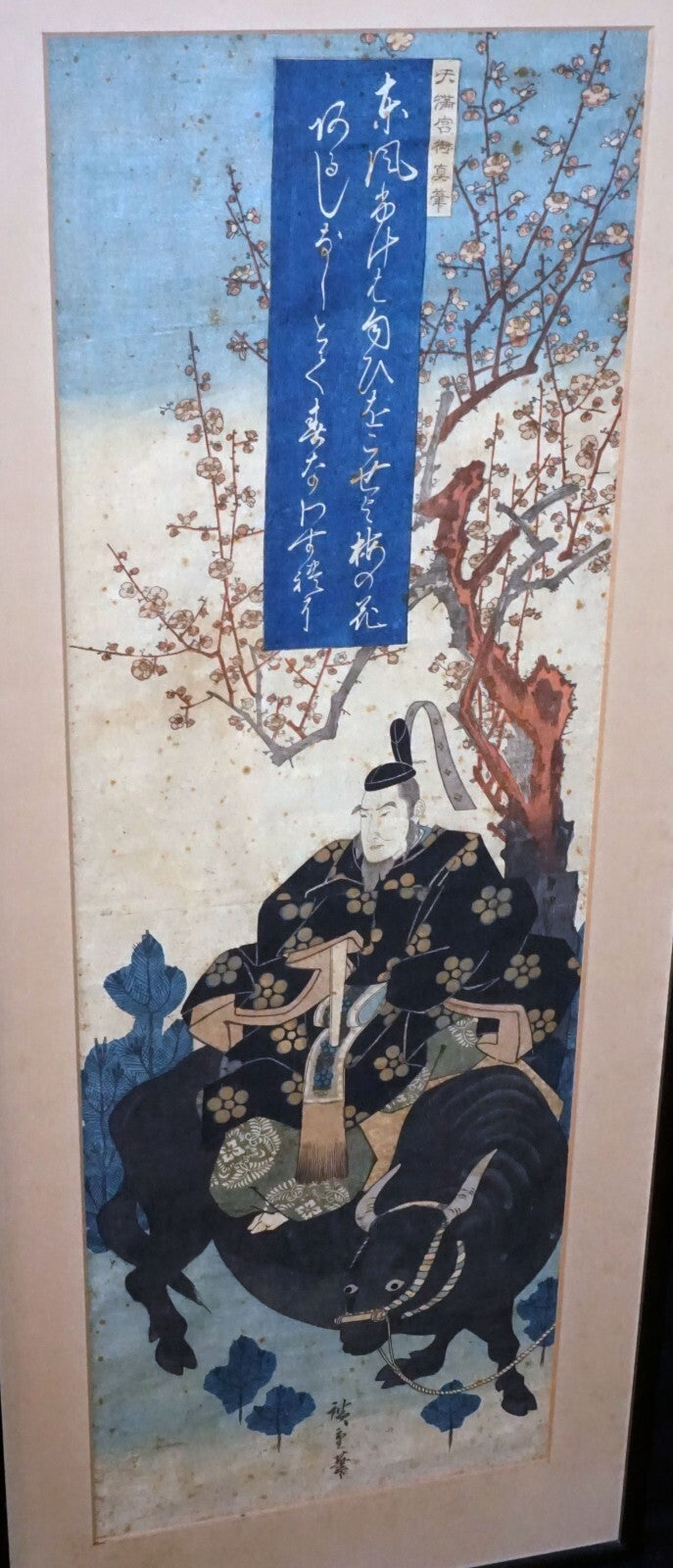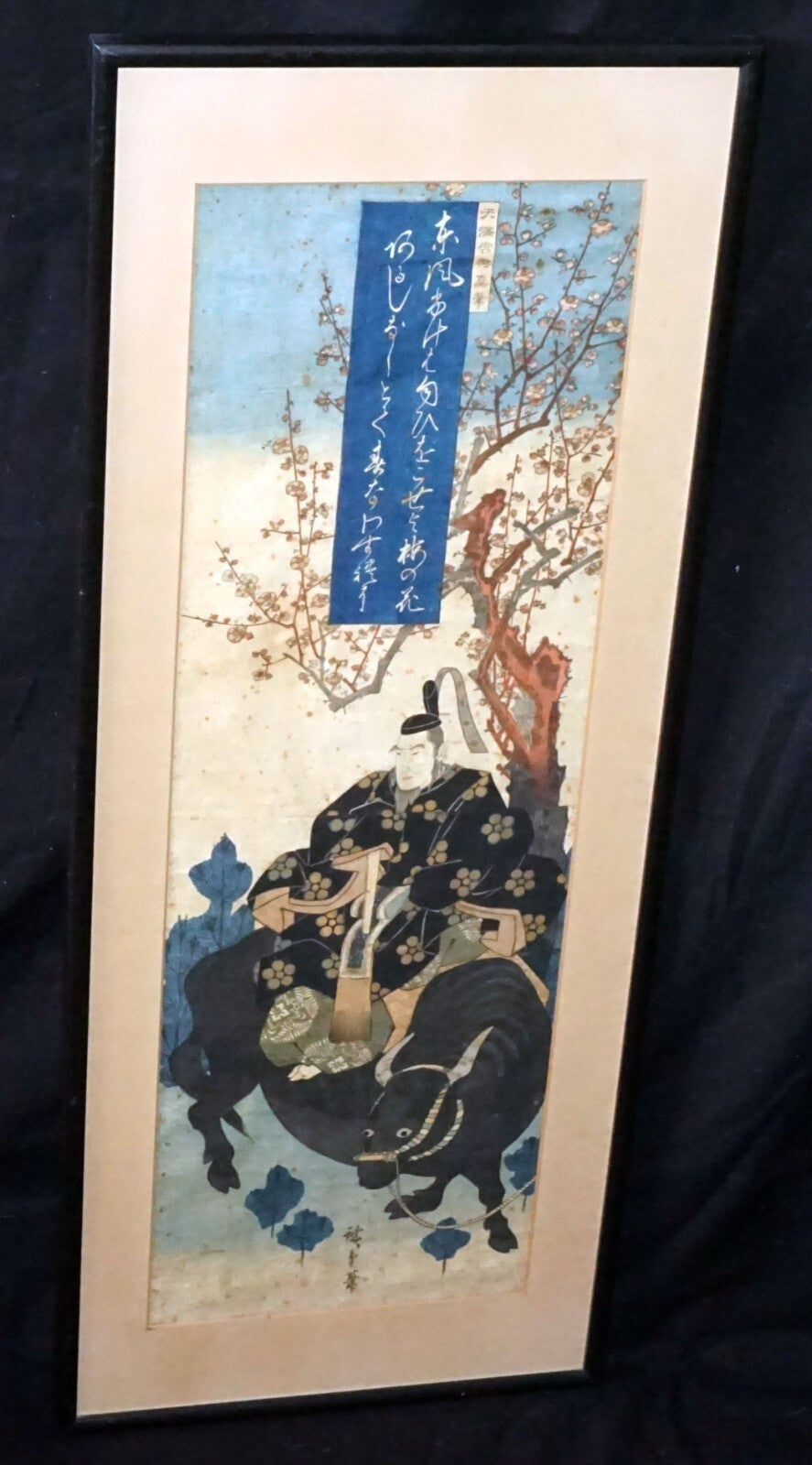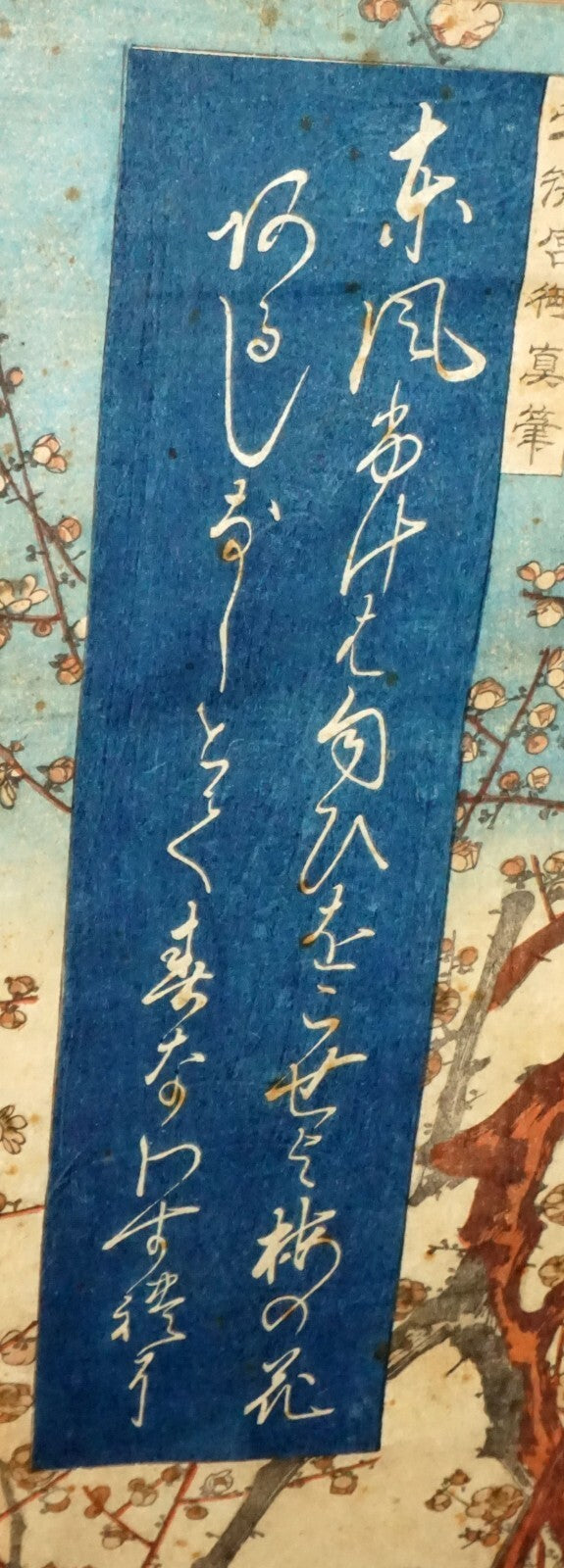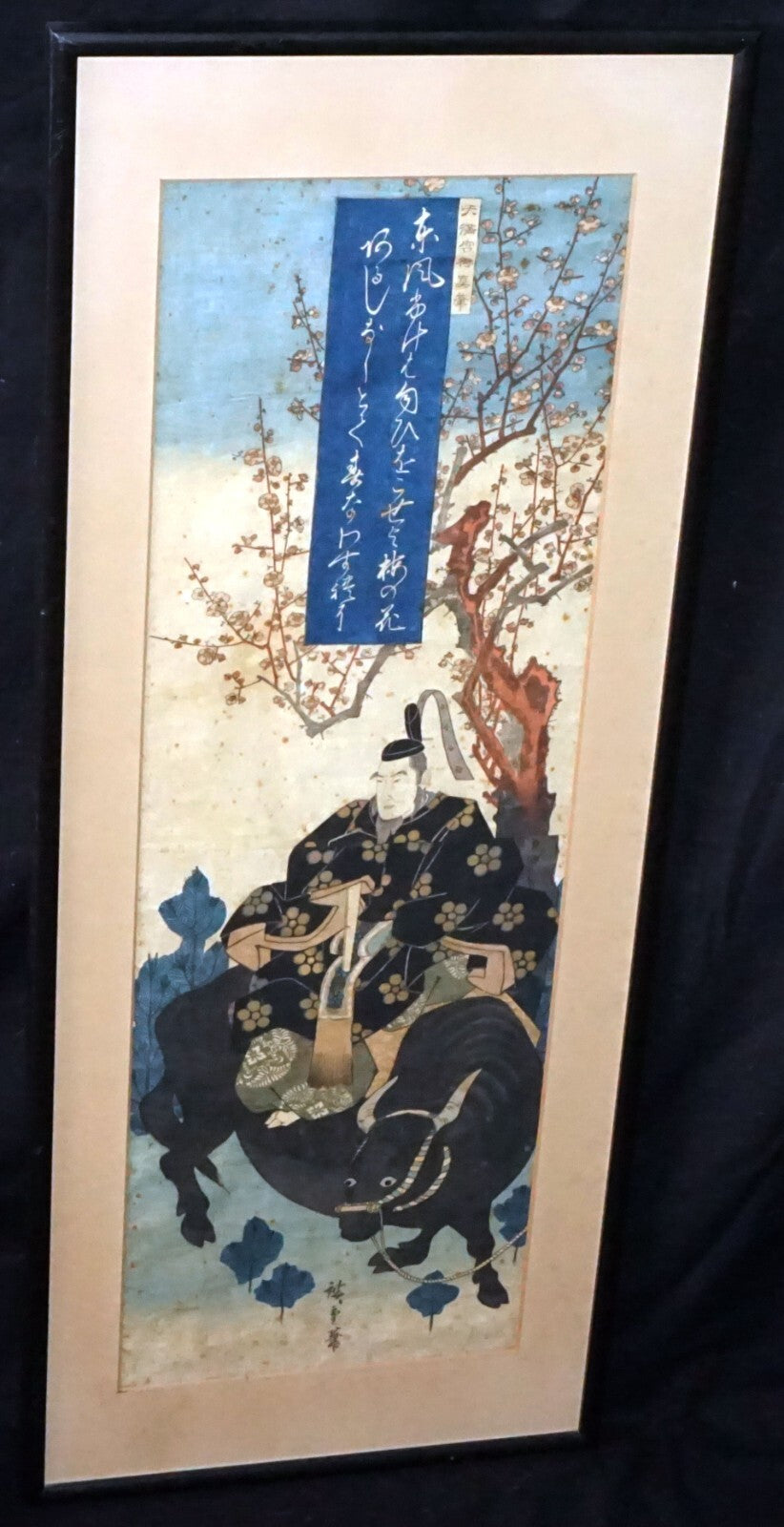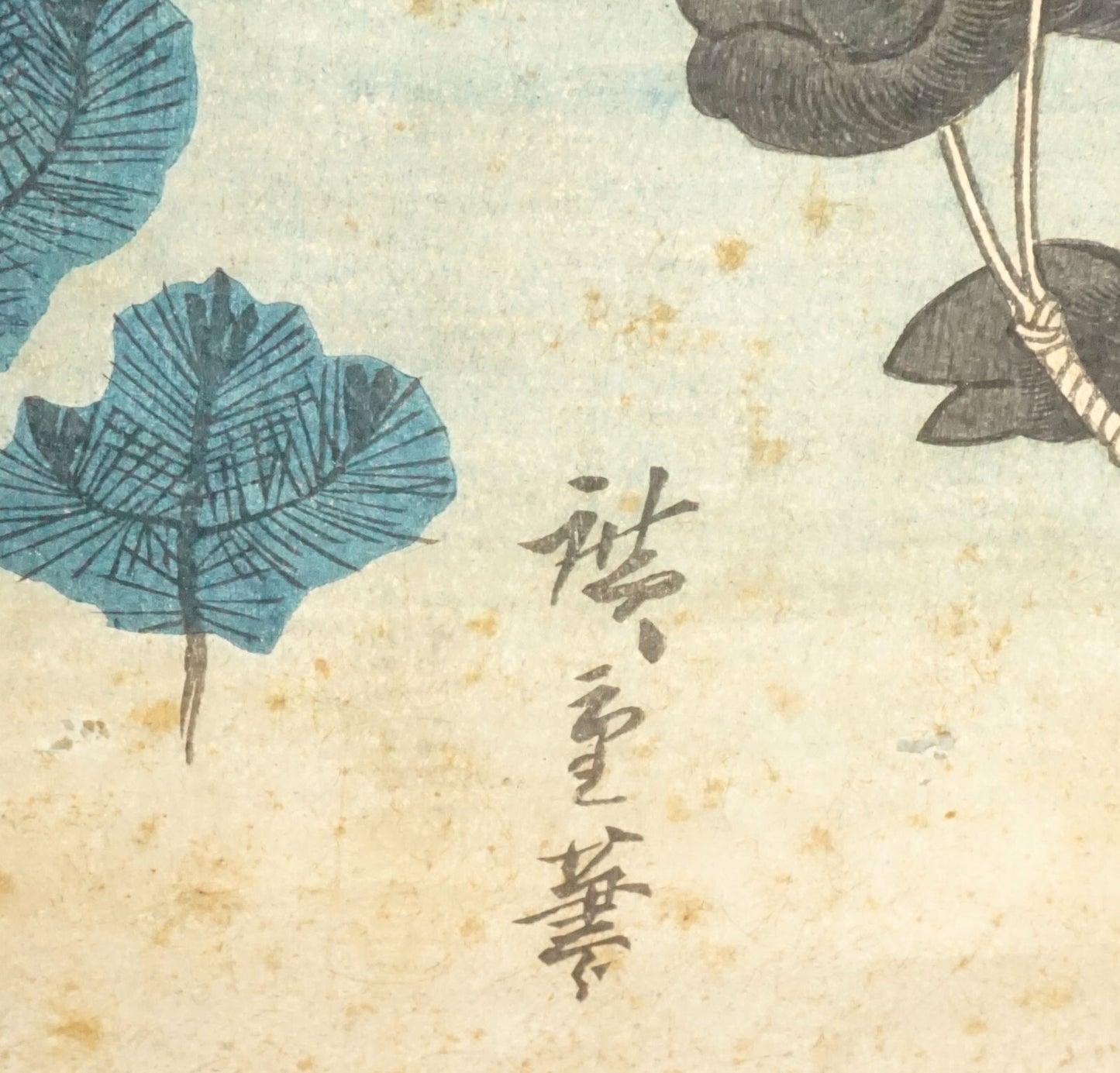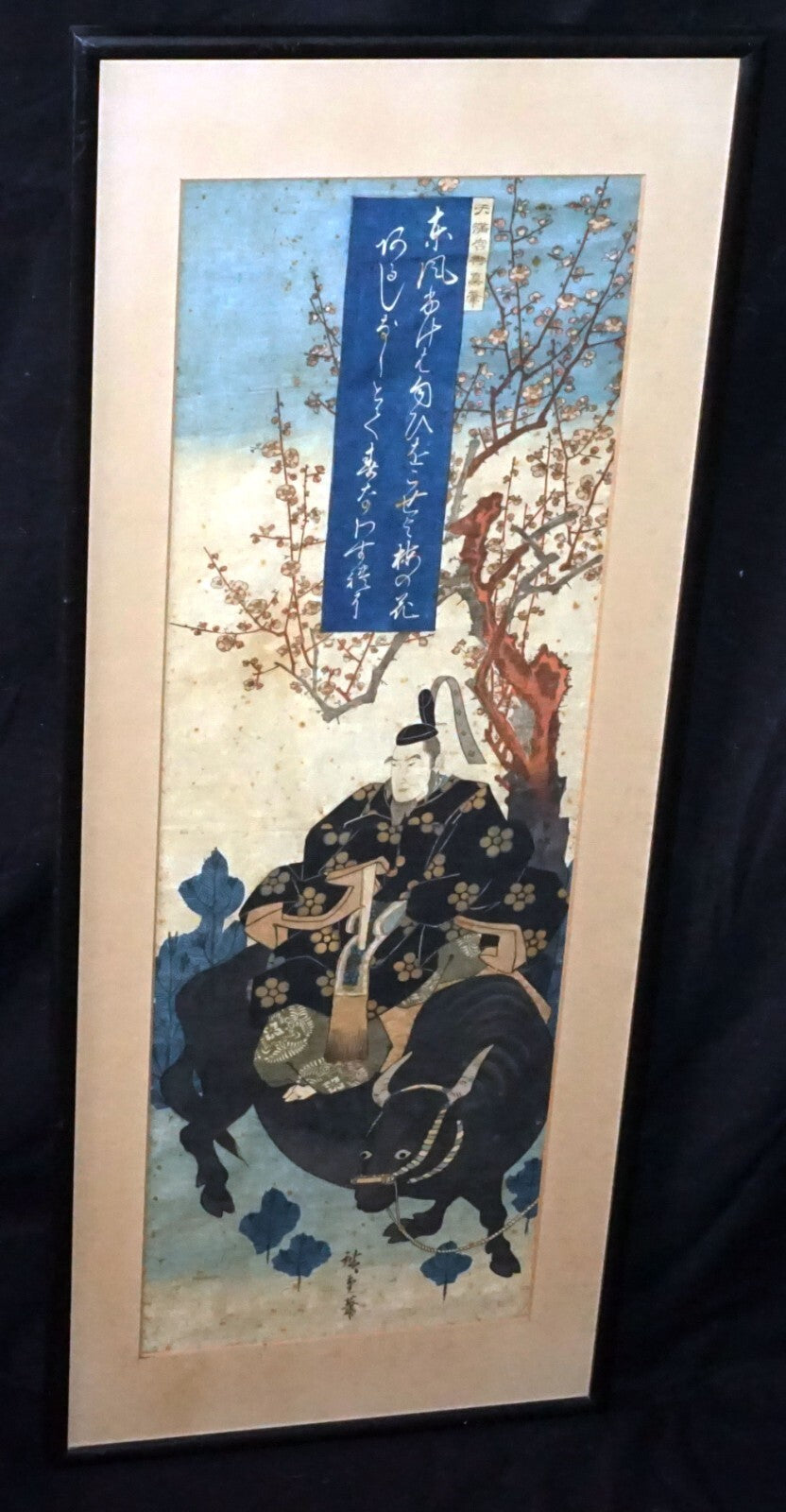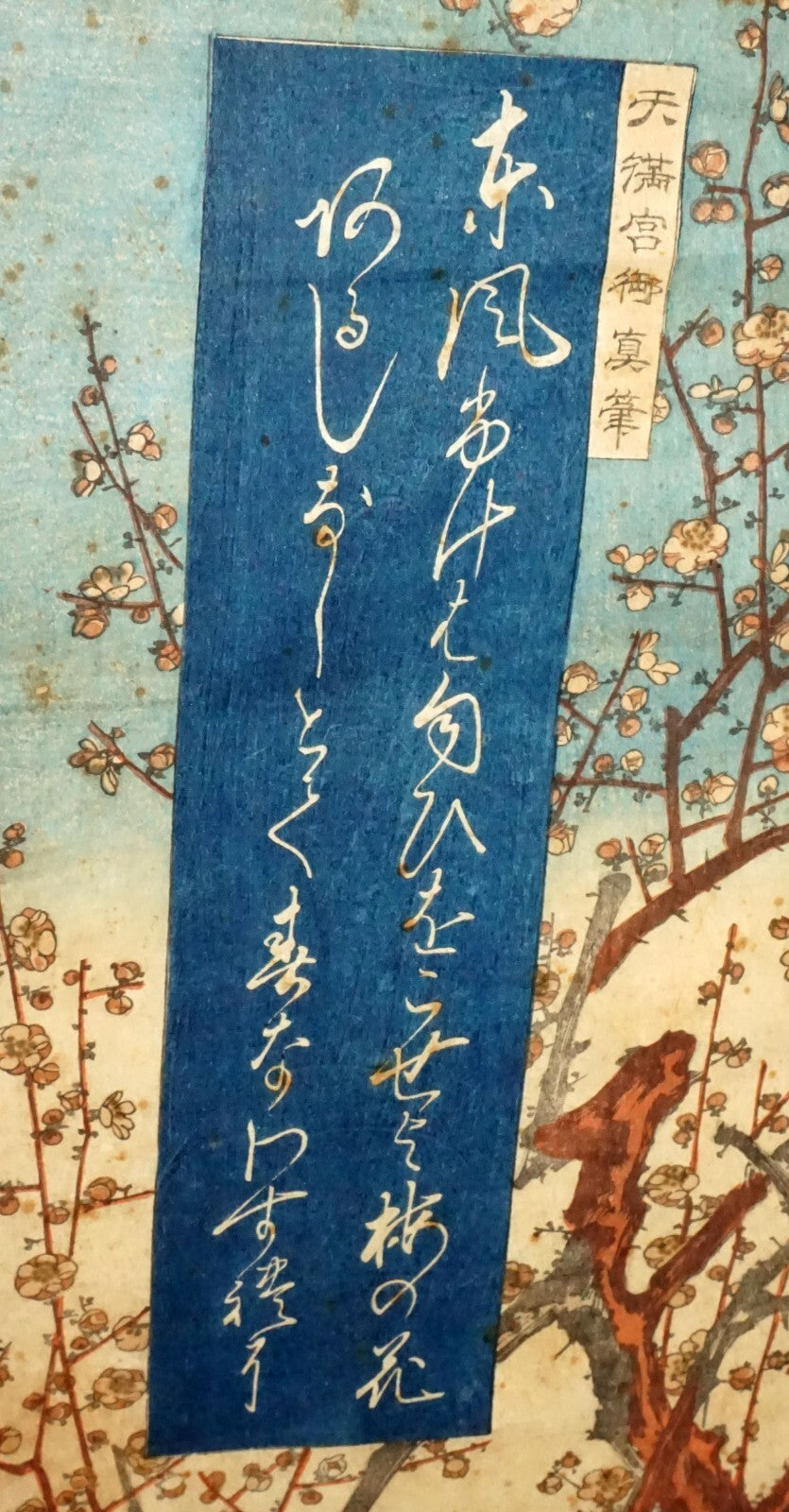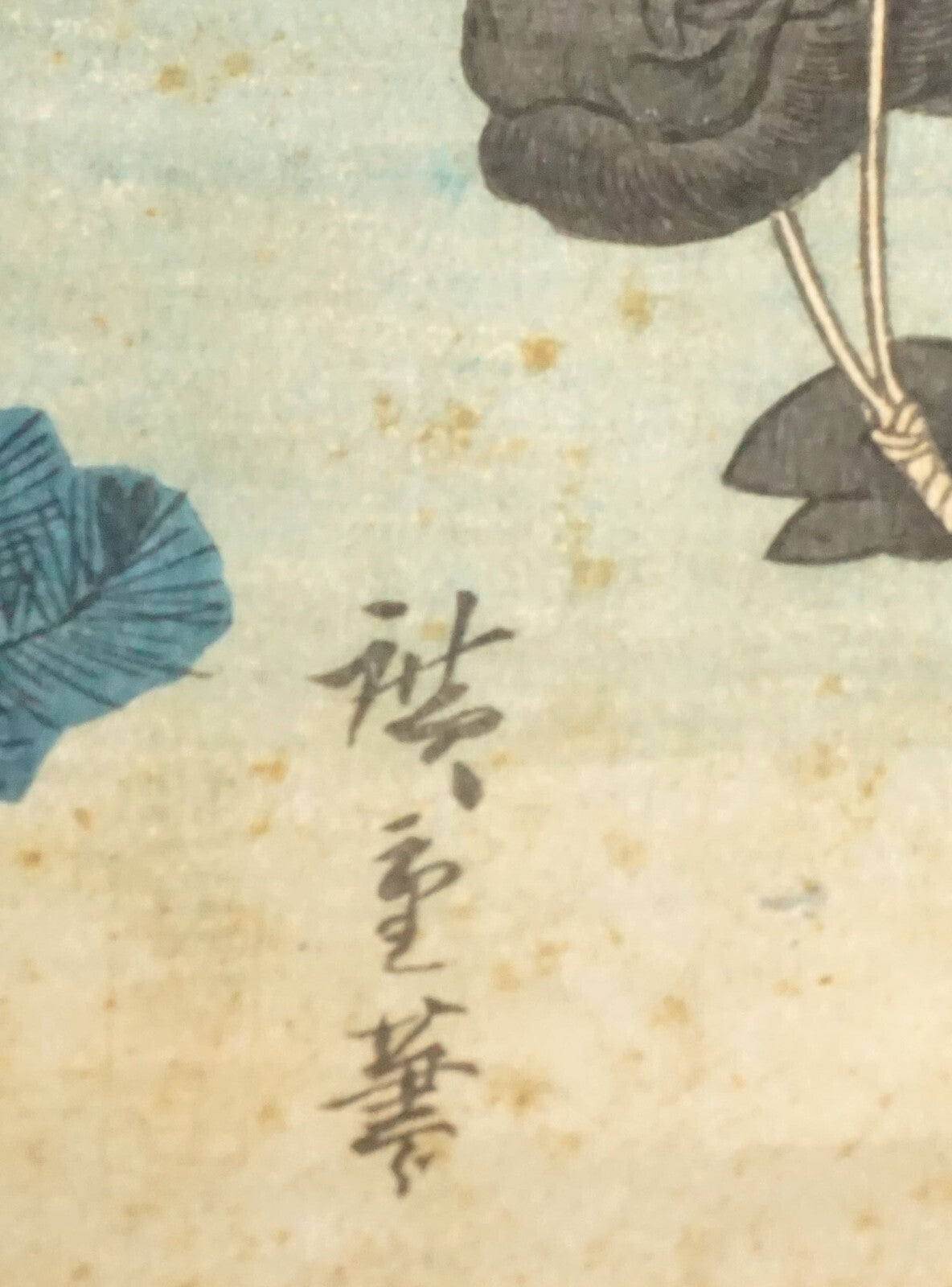1
/
of
12
Harnisch and Company
1830s Japanese Color WB Print Kakemono-e "Kitano Tenjin" by Hiroshige I (LeL)
1830s Japanese Color WB Print Kakemono-e "Kitano Tenjin" by Hiroshige I (LeL)
Regular price
$849.00 USD
Regular price
Sale price
$849.00 USD
Unit price
/
per
Shipping calculated at checkout.
Couldn't load pickup availability
Share
Measurements:
Print (by sight) 28 inches x 9 inches
Frame 34 inches x 13 inches
More about the artist:
Utagawa Hiroshige is recognized as a master of the ukiyo-e woodblock printing tradition, having created 8,000 prints of everyday life and landscape in Edo-period Japan with a splendid, saturated ambience. Orphaned at 12, Hiroshige began painting shortly thereafter under the tutelage of Toyohiro of the Utagawa school. His early work of narrow, vertical landscapes picturing thatched houses nestled between cliffs and vignettes of birds perched on flowering branches shows the influence of Chinese scroll painting as well as the previously dominant Kan school of Japanese painting.
Much of Hiroshiges work focuses on landscape. Partly inspired by Katsushika Hokusais popular Thirty-Six Views of Mount Fuji, Hiroshige took a softer, less formal approach with his Fifty-Three Stations of the Tokaido (183334), completed after traveling that coastal route linking Edo and Kyoto. Mountains grow green and bands of salmon-colored sunrise hang in the mist in prints like MaisakaNo. 31, where traders and farmers mundanely pass by in the foreground.
Hiroshiges prolific output was somewhat due to his being paid very little per series. Still, this did not deter him, as he receded to Buddhist monkhood in 1856 to complete his brilliant and lasting One Hundred Famous Views of Edo (185658). He died in 1858, 10 years before Monet, Van Gogh, Whistler, and a host of Impressionist painters became eager collectors of Japanese art. And so Hiroshiges surging bokashi, or varied gradient printing, lives onvisibly influencing artists like Paul Gauguin (see the Art Institutes Mahana no atua, 1894) and Frank Lloyd Wright.

Sell Smarter with Kyozou.
Inventory and Ecommerce Management
